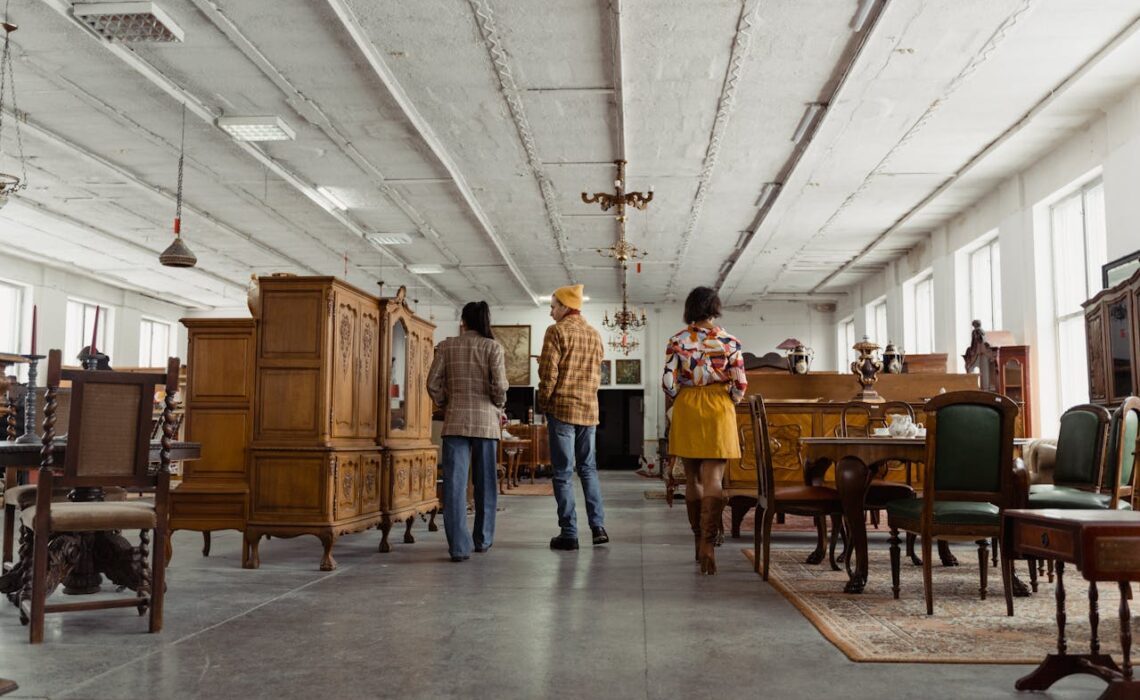Most people assume great interior design comes from buying everything new, matching sets, and showroom-perfect décor. The truth is, the rooms that look the most expensive almost never start with brand-new furniture.
Designers, stagers, and stylists quietly rely on used furniture to add depth, quality, and character without draining budgets. That’s how they create layered spaces that feel intentional instead of manufactured.
Why “New” Doesn’t Automatically Look High-End
Table of Contents
- Why “New” Doesn’t Automatically Look High-End
- How Professionals Quietly Source Statement Pieces
- Personality Makes a Space Look Designed, Not Assembled
- Why Quality Outlasts Trends Every Time
- Blending Old and New Without Looking Dated
- Where The Good Inventory Comes From
- Imperfections Create Opportunity
- Rooms With Character Don’t Come From a Catalogue
- Used Doesn’t Mean Cheap—It Means Chosen
- Shopping Before You “Need” Something Pays Off
- What Most Shoppers Still Don’t Realize
Brand-new furniture often looks flat and predictable. It comes in the same finishes and identical silhouettes from one retailer to the next. When every item in a room is new, the space feels staged rather than designed. Stylists know that contrast, texture, and age give a room substance—something factory-fresh furniture rarely provides.
They look for pieces with structure, weight, and real materials. That’s why they browse sources where secondhand doesn’t mean worn-out, but well-built and unique.
How Professionals Quietly Source Statement Pieces
Stylists aren’t wandering thrift aisles hoping to strike gold. They’re scouting places that consistently carry higher-end pre-owned items. They know which pieces can anchor a room and which details matter. That’s why many rely on used furniture to find quality without the markup.
Construction tells the truth faster than a price tag. Solid frames, real wood, dovetail joints, metal hardware, and weight signal long-term value. Even if a piece needs recovering or refinishing, the foundation is better than most mass-produced items sold today.
Personality Makes a Space Look Designed, Not Assembled
Rooms that look expensive rarely come from a matching set. Designers start with a piece that adds identity: a vintage sideboard, a sculptural chair, a carved cabinet, or a marble-topped table. They mix that with newer elements so the room doesn’t feel themed or dated. That blend is what most shoppers don’t know how to recreate.
A brand-new living room set can make a space look basic. One older piece with presence can make it look curated.
Why Quality Outlasts Trends Every Time
Many pre-owned furnishings were built before shortcuts took over manufacturing. Real wood, solid frames, and hand-finished details survive far longer than fast-assembly pieces. That’s why designers don’t care if a piece is ten or twenty years old—if it’s made well, it outperforms something brand-new.
The goal isn’t to find something trendy—it’s to find something that doesn’t fall apart or blend into every other living room.
Blending Old and New Without Looking Dated
The fear most shoppers have is that older pieces will make a room look mismatched or worn out. Designers do the complete opposite: they use one strong piece and build around it with lighting, rugs, and modern accents. A sleek sofa next to a pre-owned carved console looks intentional, not secondhand. A marble table paired with a contemporary lamp creates interest instead of clutter.
People don’t notice age—they notice balance.
Where The Good Inventory Comes From
Not all pre-owned furniture is worth buying. Stylists avoid random listings and go where turnover comes from real homes: relocations, upscale redesigns, downsizing, or model staging. Those sources produce furniture that was expensive to begin with, but no longer fits the owner’s plans.
That’s why curated resale environments give shoppers options that don’t feel second-rate. The selection reflects quality rather than clearance.
Imperfections Create Opportunity
A scratch on solid wood is cosmetic. A dated fabric on a well-framed chair can be reupholstered. Slight wear on a high-end piece doesn’t reduce its potential—it often lowers the cost. Designers see past the blemish and into the build. They’d rather invest in a structurally superior pre-owned item than a flimsy new one that looks untouched for now but fails later.
Small flaws often hide the biggest values.
Rooms With Character Don’t Come From a Catalogue

When someone walks into a beautiful space and admires the design, they’re usually responding to contrast and uniqueness. Rooms that look personal and expensive don’t come from a furniture store’s floor plan. They come from mixing sources, decades, and textures in ways that feel natural.
A brand-new room is easy to identify—and easy to forget. A room built around one standout secondhand find becomes memorable.
Used Doesn’t Mean Cheap—It Means Chosen
People assume buying new is the goal. Designers focus on buying well. With the same budget, someone who only buys new gets fewer pieces made with cheaper construction. Someone who mixes sources gets better-quality materials, richer aesthetic variety, and more freedom to customize.
Using pre-owned isn’t a shortcut—it’s a strategy.
Shopping Before You “Need” Something Pays Off
The best finds don’t appear on demand. Designers check inventory often, grab valuable pieces when they see them, and hold onto them until the right space calls for it. That’s how iconic pieces land in finished rooms. Waiting until you’re furnishing a room limits your options to whatever’s left.
Those who browse consistently get the pieces everyone else wishes they’d seen first.
What Most Shoppers Still Don’t Realize
Stylists don’t separate new from old—they blend both to create balance. Spaces that look collected over time always outperform spaces that look newly purchased. People assume used furniture signals lower budget. In reality, it often signals higher taste.
The secret isn’t owning something first—it’s recognizing quality and giving it a better home than the last one.





No Comments